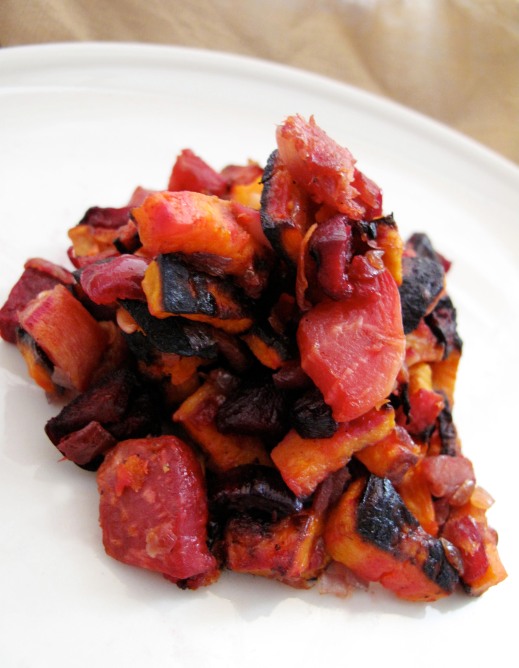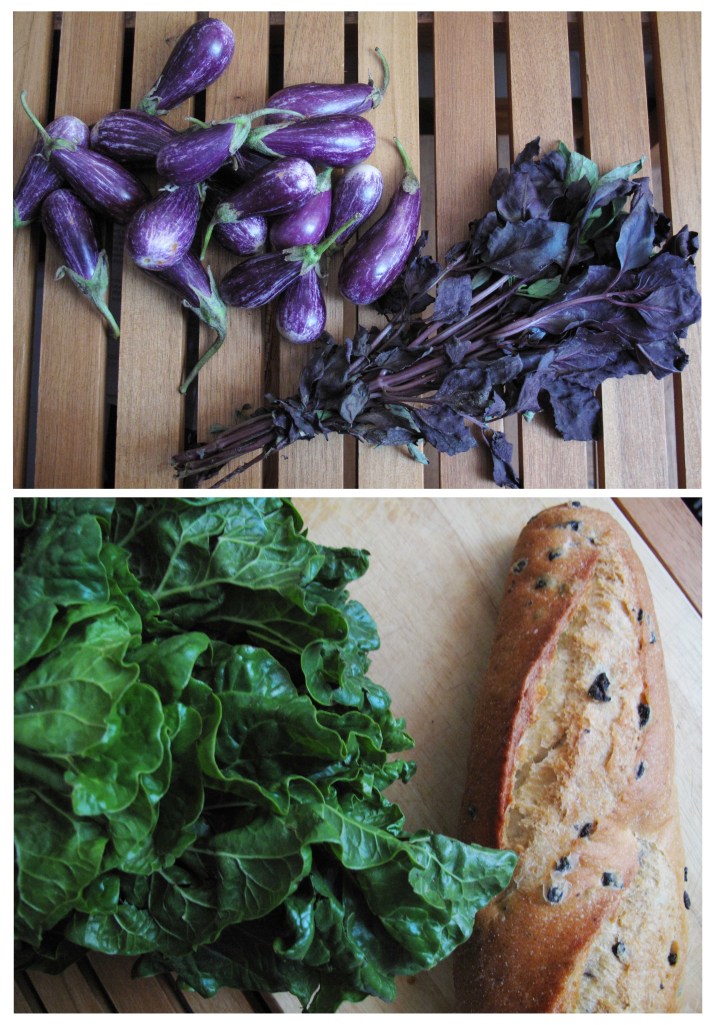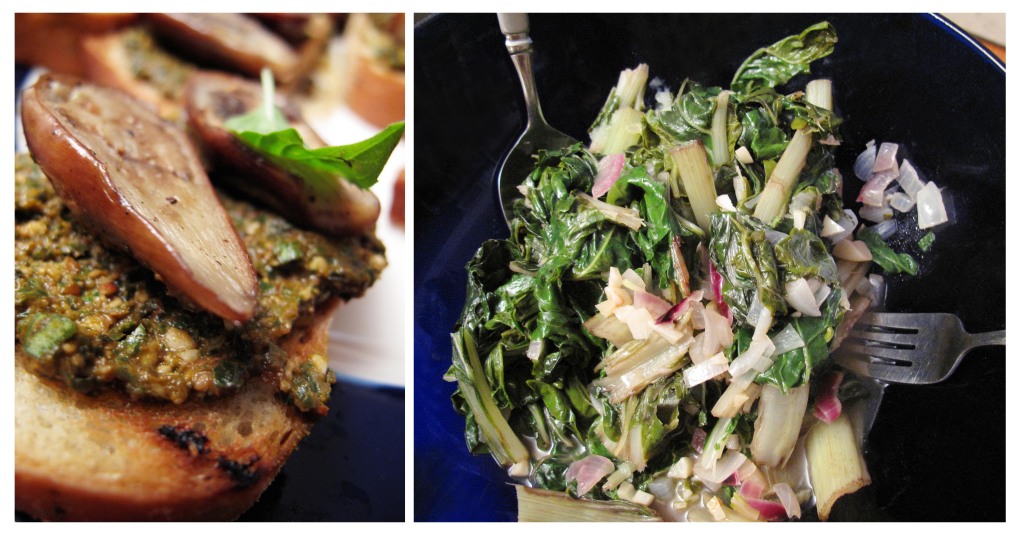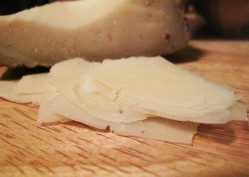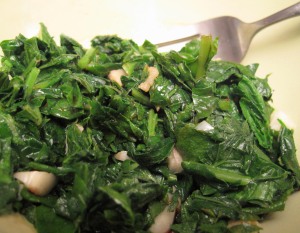One of the best things my mom ever taught me was how to braise leeks. And now I’m sharing her secret to leek perfection, because no one should have to go through life without eating these! While I’m at it, I’m throwing in how to make the kohlrabi mash we had tonight to accompany the braised leeks and seared scallops.
Our whole meal tonight came from the Park Slope Sunday farmer’s market. I love shopping at the farmer’s market whenever possible, not just to support the local farmers but the food tastes so much better too. Leeks, especially when fresh from the farmer’s market, are notoriously full of soil, so washing them well is a key first step. Cut off the bottom and very top (about an inch and a half of the darkest green) and then slice open lengthwise. Then cut each half stalk into about three sections, and rinse well under cold running water, fanning out the layers. Finally soak the leeks in a bowl of cool water for about 15 minutes, swishing them around a few times to release any more soil, and then give them once last rinse. After draining, chop the stalks into about 1/2 inch slices. In a large pan, melt 1 tbsp butter and 1-2 tbsp olive oil and add the chopped leeks. Saute for about 2 minutes on medium-high heat, add about 1/8 of a chicken or vegetable bouillon cube, and then start gradually adding very small amounts of water. The water will boil off quickly; add a little more as soon as the pan looks dry. Keep doing this for about 10 minutes, or until the leeks are soft, stirring as you add the water. When the leeks are soft, add about 1 – 1.5 ounces of whiskey, stir, and let simmer for about 5 more minutes. At the end, add fresh pepper, a little salt if needed, and a generous squeeze of lemon juice.
For the kohlrabi (we used purple kohlrabi tonight, but the green/white and purple both taste the same), remove the leaves (you can use these in another dish, stir fried or steamed), and peel off the tough outer peel. At this point I usually slice off a few little pieces to eat raw because it’s so tasty, and then cut the bulbs into quarters, and boil them in lightly salted water for about 30 minutes. When soft, add about 1/4 milk, 1 tbsp butter, 1 tbsp olive oil, and puree with a hand blender or food processor. Add salt and pepper to taste. And in case you’re wondering, there is no real recipe for the seared scallops. My husband is usually in charge of the scallops, and he just dries them well, seasons with salt and pepper, and sears them for about 2 minutes on each side in very hot mixture of coconut oil and butter. They key to the beautiful golden color is to not move them around in the pan while searing!



